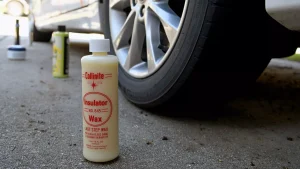DIY car repairs offer you an economical option by taking on basic maintenance tasks yourself and saving money in the process. However, any misstep could compromise both your safety and reliability of your vehicle if done improperly.
With some research and patience, DIY repairs are possible with ease. Here are some examples: seat belts, rear view mirror and even oil changes can all be accomplished at home!
Seat Belts
Seat belts are the main line of defense in any car accident, protecting occupants from being thrown around the vehicle in front of them or through its windshield and helping spread crash forces across more resilient parts of their bodies such as hips and shoulders.
A seat belt system consists of three primary elements: webbing, retractor and buckle. Webbing is made up of tightly woven fabric that has high tensile strength; when passing through a retractor – a winding mechanism designed to pull slack out of belt during normal usage – slack is removed automatically by winding mechanism during normal use; upon sensing unexpected movement or collision however, retractor will lock into place and wind up tight to protect occupants against injuries and reduce potential damages.
Modern vehicles utilize webbing from shoulder and lap belts, guided through pillar loops located above each door on either side of the front seat to an automatic non-motorized retractor located within each door. The diagonal guidance of pillar loop webbing across passengers chest and shoulders prevents upper body movement that could result in serious injury; additionally it has special stitching designed to “rip” under certain loads thus managing energy transfer while decreasing physical forces on their body.
Adjust your seat belt correctly for optimal fit; both lap and shoulder belts should lie ideally across your hips, not stomach, while sharing or using more than one at the same time can reduce protection in case of collisions.
Rear View Mirror
Rear view mirrors are an indispensable safety feature in any vehicle. They allow drivers to see vehicles coming up behind them and help monitor any children who may be riding in the backseat, keeping everyone safer on the road. When one stops working properly it makes driving hazardous for everyone involved and should therefore always function correctly for safe operation.
If your rear view mirror is starting to come loose, fixing it shouldn’t be difficult or require any major tools. First step should be removing loose items from your vehicle. Next, get yourself a replacement mirror from an auto parts store; ensure it fits perfectly for your car so as not to interfere with any wires that might be connected.
Once you have your new mirror in hand, use a small hammer to help ease the process of unhooking its plastic bracket from the rear button on your windshield (Picture 2). Take extra caution not to damage either the groove in your glass or metal post of your mirror post while doing this step.
Next, apply the adhesive component of your kit to the metal button on the mirror. Be careful not to overdo it as the glue dries quickly. Finally, set your mirror atop its button and hold for one minute so it can set properly.
Souping Up the Sound System
Sound quality can make or break your car stereo experience, and adding a capacitor to its electrical system may help eliminate demand peaks that cause distortion by overworking your amplifier. Kits for this repair can often be found at auto parts stores nearby.
Materials and the shape of your ride’s interior play a large part in its acoustics. Hard surfaces such as windows and metal panels reflect sound waves back, making the music sound like it is coming from within a can. Sound deadening reduces vibrations and noise; diffusers scatter soundwaves into various directions eliminating echos or hotspots.
Oil Change
Oil changes are one of the essential tasks necessary for maintaining smooth vehicle operation, yet when attempted on your own you might not achieve optimal results. First and foremost, using the correct type of oil could cause irreparable engine damage – be wary if attempting this at home!
As mentioned previously, improper disposal of old oil can create environmental concerns or result in fines, while some tasks – like rebuilding an engine or switching out transmissions – should be left to professionals.
If you opt to perform your own oil change, ensure you have all of the appropriate tools and equipment ready. Allowing the car to warm up for several minutes prior to beginning can also help ensure smoother oil changes with reduced spills. Always use a drain pan as this helps prevent unnecessary complications!
Finally, be sure to recycle any used oil at an auto parts store; recycling can save money when compared with taking it directly to a junkyard or leaving it on the side of the road where it could potentially pollute the environment. Also remember to refill all necessary fluids and lubricants, essential for car maintenance.

